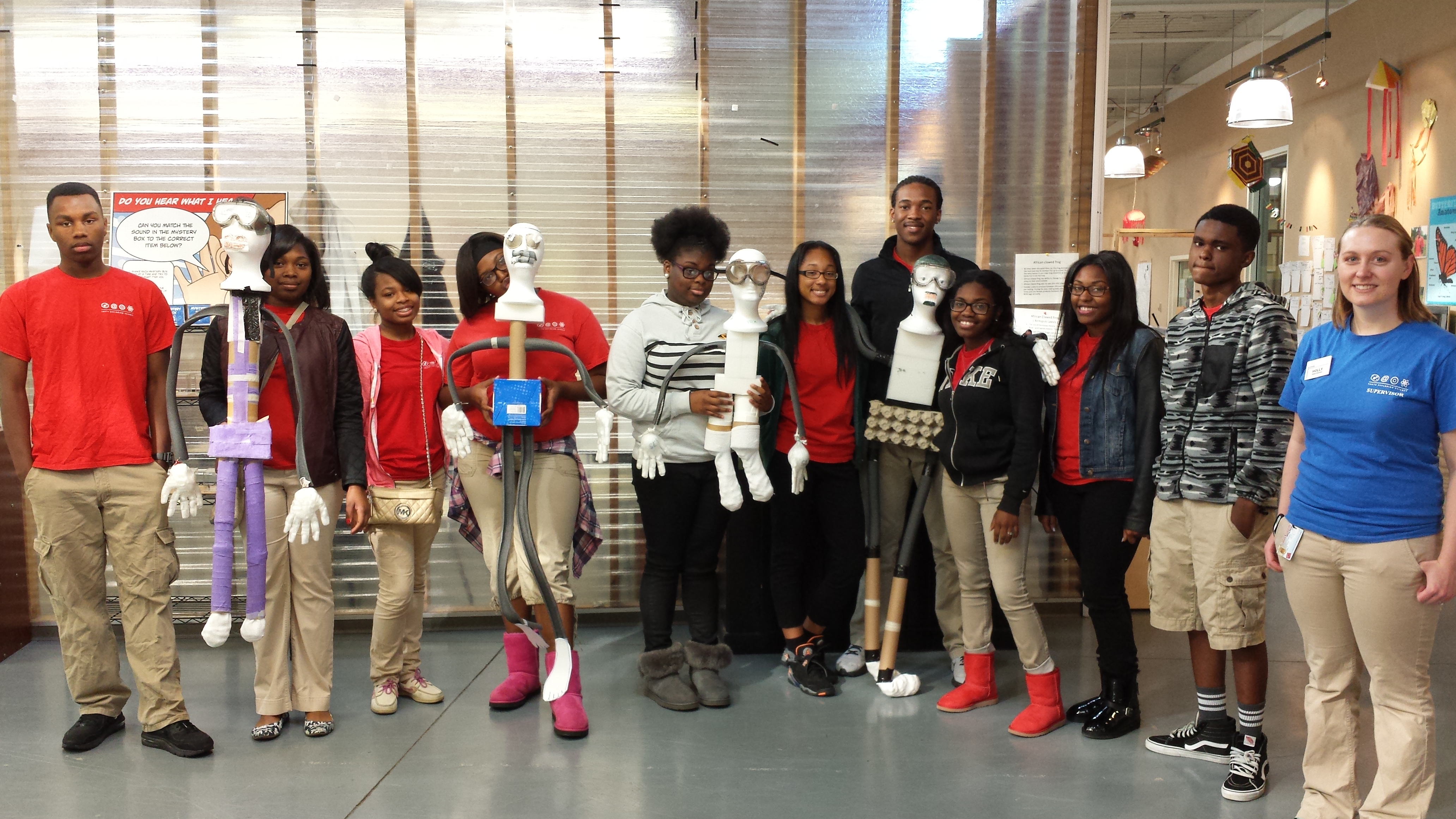-
About
Dean's Welcome
College of Arts and Sciences Organizational Chart
Student Testimonials
-
Administration and Staff
-
Faculty Resources
Standing Committees
-
Advising and Student Resources
Graduation Information
Dr. Marcus Allen Advising Center
Faculty Advisors
Dual Enrollment
Ombudsman
Retention Coordinator
Scholarships
Student Advisory Council
Who's Who
Pre-Professional Advising
Undeclared Students
LSAT, MCAT and GRE Test Prep Information
GRE Test Prep Strategy Live-Online Courses
-
CAS Calendar
-
Departments and Academic Programs
Departments
Undergraduate
Graduate
Certificates and Minors
-
Online Forms and Reports
-
Alumni and Friends
-
Undergraduate Research
Undergraduate Capitol Research Day
Undergraduate Research Symposium
Resources for Researchers
-
Contact Us
-
Upcoming CAS Events and Colloquia

Teaching neuroscience to high school students might seem like a rather daunting task, but that is exactly what alum Holly Pope is doing. Pope, who graduated from UMSL in 2008 with degrees in Biology and Biochemistry and Biotechnology, is a Senior Educator in the Youth Exploring Science program at the Saint Louis Science Center. This year-round program serves minority and at-risk teens in the St. Louis area, using the STEM disciplines to teach job skills and youth development.
In this program, 200 high school students come to the Science Center every Saturday to learn about STEM disciplines such as engineering, computer coding, agri-science, chemistry and neuroscience. In the summer these students, who are paid for their involvement, use what they’ve learned all year to run workshops for kindergarten through senior citizens.
When it comes to teaching neuroscience to students as young as 14, Pope says the trick is to make everything as hands on as possible. Her classes start with basic questions like, What are the regions of the brain? What is a neuron and what are its parts? How does it signal to other neurons?
Pope has her students construct a model of a neuron using buckets and rope. Using the large scale model, students learn the anatomy of a neuron as well as how the different parts signal to each other and interact. After the teens have learned the basics, she introduces them to more complex concepts, such as action potentials, by having the teens record these electrical impulses from stimulated neurons in insect legs. Pope also challenges the teens to think critically. The teens recently put on public debates about controversial topics related to neuroscience, such as whether artificial intelligence should be considered human or not.
Ropes and buckets are quite different from the work Holly did while at UMSL where she conducted DNA footprinting to determine where a polyamide binds to DNA. Polymides prevent DNA from replicating, and therefore are useful for treating cancer. Holly conducted research as an undergraduate and after graduating continued to work in James Bashkin’s lab as a full time researcher.
After working in Bashkin’s lab for 6 months, Pope began a PhD program at St. Louis University in the Pharmacological and Physiological Science Department and continued conducting research as part of those studies. During graduate school, she taught a science course at SLU to undergraduate non-science majors, and also volunteered at the Science Center. She began to realize that, although she liked research, she enjoyed sharing scientific knowledge even more.
“Research can be very narrow in scope,” Pope said. “It’s not uncommon for a researcher to spend an entire career focused on studying a single protein, and that just wasn’t for me. Now I get to keep up with all area of science, including chemistry, physics, and engineering, but mostly I’m focused on spreading that knowledge to others.”
Pope says her mentors from UMSL are still a part of her career. Last year Youth Exploring Science hosted a college fair for its students and Pope invited her former professor, Dan Gerth, to take part. This spring another one of Pope’s former professors, Geri Friedline, is going to lead a writing workshop for the students to help them with the essay portion of a college application.
Looking back, Pope says she can see that the roots of her current career were planted during her undergraduate days at UMSL. She was an enthusiastic science educator even back then, serving as the president of the Chemistry Club. She recalls doing chemistry demonstrations for high school students. She spread the word about chemistry by participating in National Chemistry Week and Mole Day. She also attended an American Chemical Society conference and even set up mini model volcanos on the MSC bridge to engage fellow students in science.
“Towards the end of graduate school when I started to look for a job, I took the time to really figure out what it was about science that I loved,” Pope says. “I thought about my time in Chemistry Club at UMSL, my teaching experience from SLU, and my volunteer experience at the Science Center. I realized that I loved learning about science and sharing it with others. And not just science content, but the process of science and how to think critically. A Carl Sagan quote that I share with the teens in my component is ‘Science is much more than a body of knowledge. It’s a way of thinking.’”



